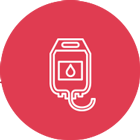February is National Pet Dental Health Month. Most practices use this as a time to talk more about dental cleanings and healthy teeth in general. It might come across as a gimmick, but dental health is just as important to our cats’ and dogs’ overall health as it is to a human’s. So the only gimmick here is trying to help educate pet owners to provide the best care they can! Here are three things you can keep in mind as an owner.
1. Poor dental health is all too common in pets!
It can be easy as humans to ignore our dental health, so it’s pretty natural that we would let our pets’ dental health slide. However, unhealthy teeth and gums in pets do happen when we ignore them and they can lead to periodontal disease and even problems with internal organs if left untreated.
2. Early Detection
Detection/Warning Signs
-Chronic bad breath
-Pawing at face
-bleeding and/or inflamed gums
-yellow or brown teeth
-difficulty chewing (this could just look like your pet not eating if they only eat dry food.
3. Prevention
We’re not in total control of our pet’s health, just like we’re not in total control of their behavior. BUT, there are some things we can do to influence favorable outcomes with our pet’s health and their behavior. Here are some simple things you can do to help your pet have the best dental health!
– A: Get your pet’s teeth checked at least once a year. During your wellness check, your vet will check their teeth. Ask them what they recommend for dental cleanings as well! Dental cleanings are a bit more expensive than wellness needs you may be used to paying, but they could help your pet live longer and avoid emergency services later on! We recommend utilizing Scratchpay, Care Credit, Pet Insurance, or simply saving up for bigger expenses such as this! Click here to schedule a dental appointment!
–B: Brush your pet’s teeth at home! Brushing your pet’s teeth helps prevent disease and decay just like it does for us. Introduce the toothpaste and toothbrush slowly. Be patient, it can take weeks for your cat or dog to become used to the new routine. Every day is best, but as often as you can manage will help. Be sure to purchase pet specific products! Fluoride toothpaste is toxic to cats and dogs!
–C. Provide your pet with toys that promote good dental health! Similar to how some dentists recommend chewing sugar-free gum to help promote good dental health, some toys can do the same thing for your pets! Certain toys and treats are made to encourage mechanical action and can help keep teeth clean. Sturdy rope toys and rubber toys with ridges are great. Some companies even make toys that you can squirt pet toothpaste in to clean your pet’s teeth as they play and chew!
In Conclusion
Maybe trying to do all of these things sounds like too much. Don’t bite off more than you can chew. 😉 If you can implement any of these things, you will positively impact your pet’s health! Talk to your vet at your next appointment. They can help provide recommendations and individualized treatment plans that best suit you and your pets’ needs!






